Creative Halloween Costumes Inspired by the Japanese 19th Century
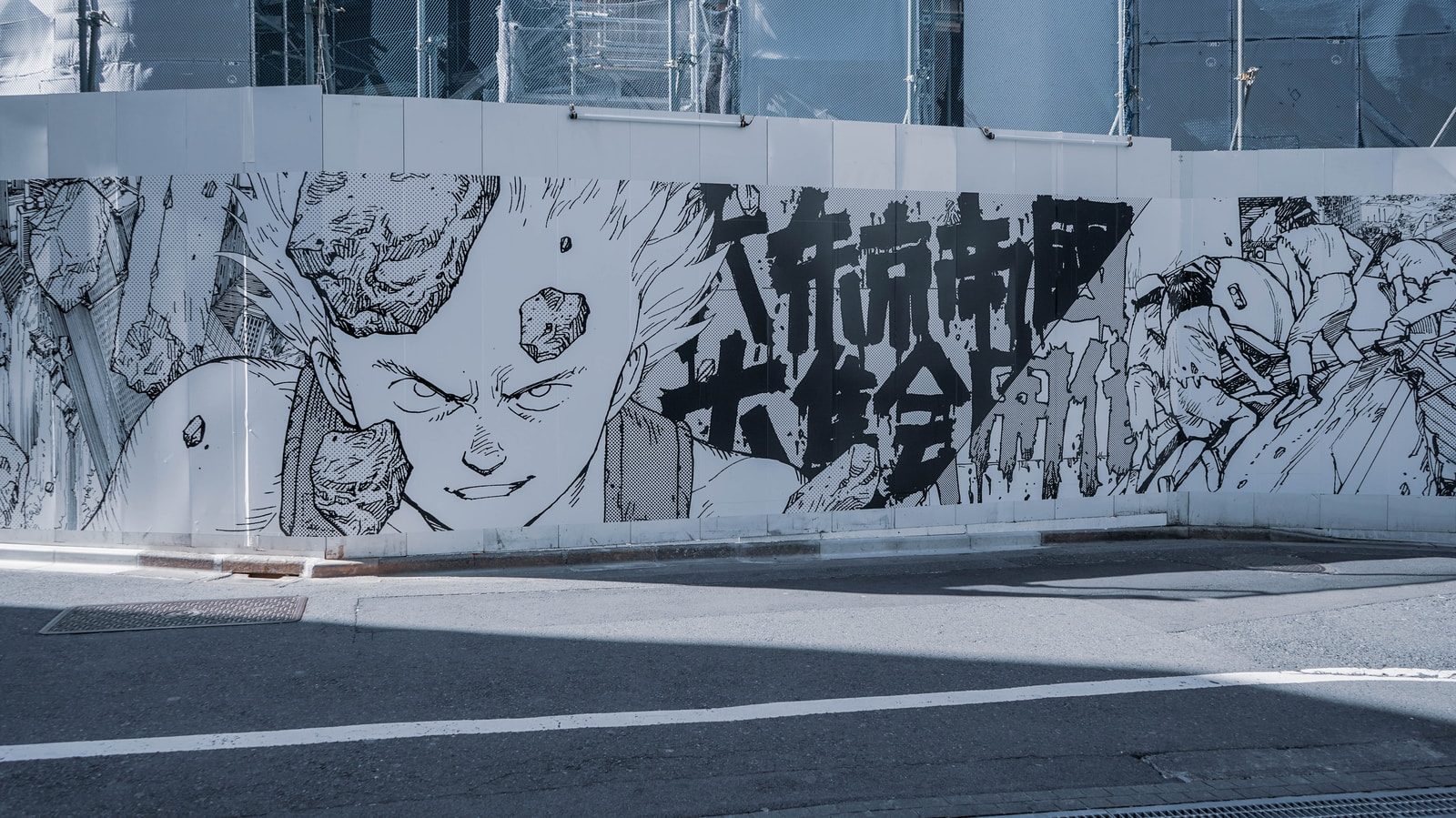
Halloween is a Western culture, and it has been gaining mass participation in Japan, especially among the youth. In 1997, Tokyo Disneyland held the “Disney Happy Halloween” costume event, which led to the spread of this celebration in the country. It is said that the Disneyland event began Halloween to take roots in Japan, after candy manufacturers and apparel stores began to sell Halloween items. The original meaning of the concept of Halloween has almost been lost in this country, and it has become a more “costume event”. Many Japanese say that this is because Japan has had a cosplay culture since the Edo period (1603 – 1867). There seems to be a strong affinity between the Christian origin of this festival and the Japanese traditional cosplay culture. In fact, the Japanese popular woodblock prints named ukiyo-e reveals that disguises were a very prominent part of traditional activities in Japan.
Below in the ukiyo-e images, we can see the people wearing costumes, masks, and hats when they have mass pilgrimages to visit shrines and temples or attending to social movements.
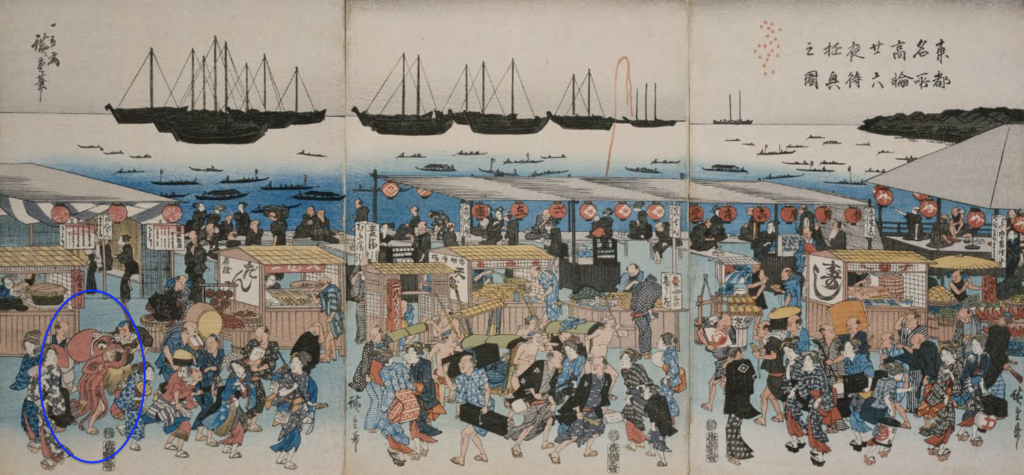
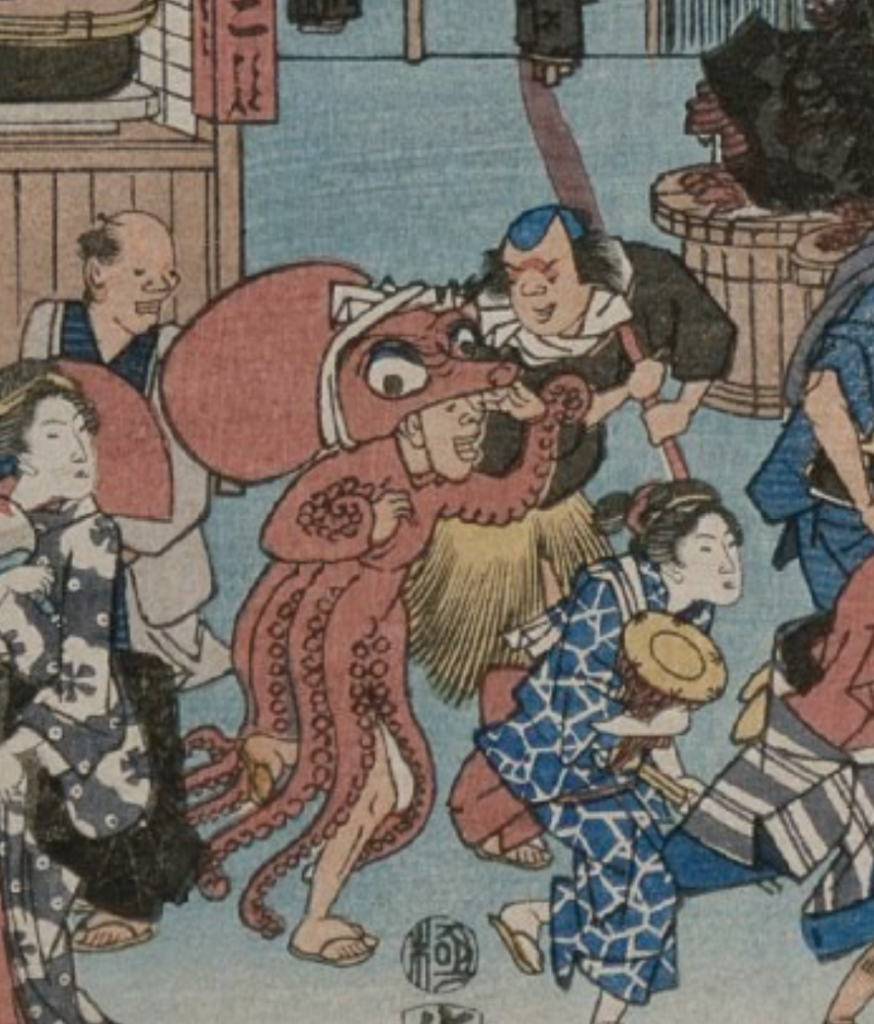
The man in the drawing is dressed like an octopus. Next to the octopus man is a man dressed as a fisherman.
This work by the ukiyo-e master Utagawa Hiroshige depicts an event from the Edo period called the 26 Night Wait. It was an event to wait for the moon to rise and to worship it. The event is held actively around Shinagawa and Takanawa, on the night of July 26th, and Lunar New Year. The octopus-man is a member of an amateur actors group called niwaka (俄). They dress up in costumes and perform impromptu dances & plays on the streets and theaters frequently.
This piece provides an interesting insight into the roots of Japan’s food culture. It shows that Japanese well-known cuisines such as sushi, tempura, and soba noodles were considered fast food items that were originally served at street stalls.
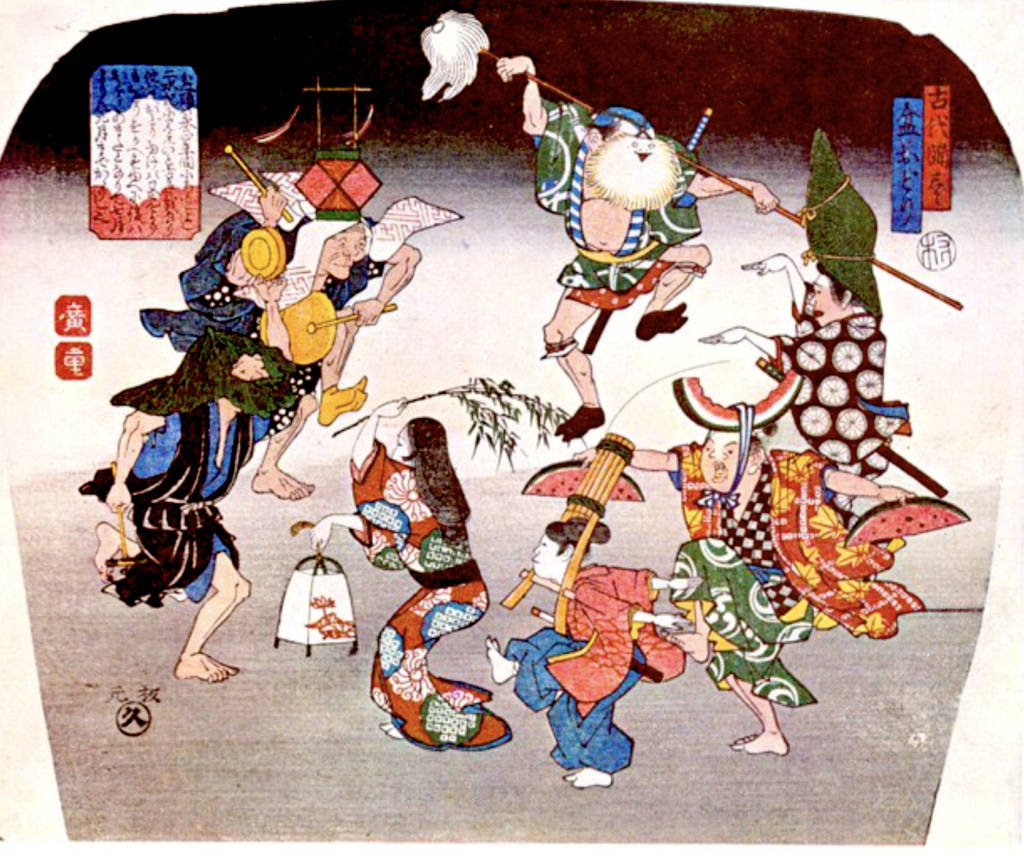
Many of the performers wear unique headpieces, especially a man on the right who is wearing an already-eaten watermelon on his head. This work depicts the Japanese folk dance named Bon Odori (盆踊り). The dance is performed during the Obon Festival in August all over the country. The event was a place for local people to interact and for men and women to meet. People dressed up in costumes sang and danced happily to release their daily suffering and exhaustion.
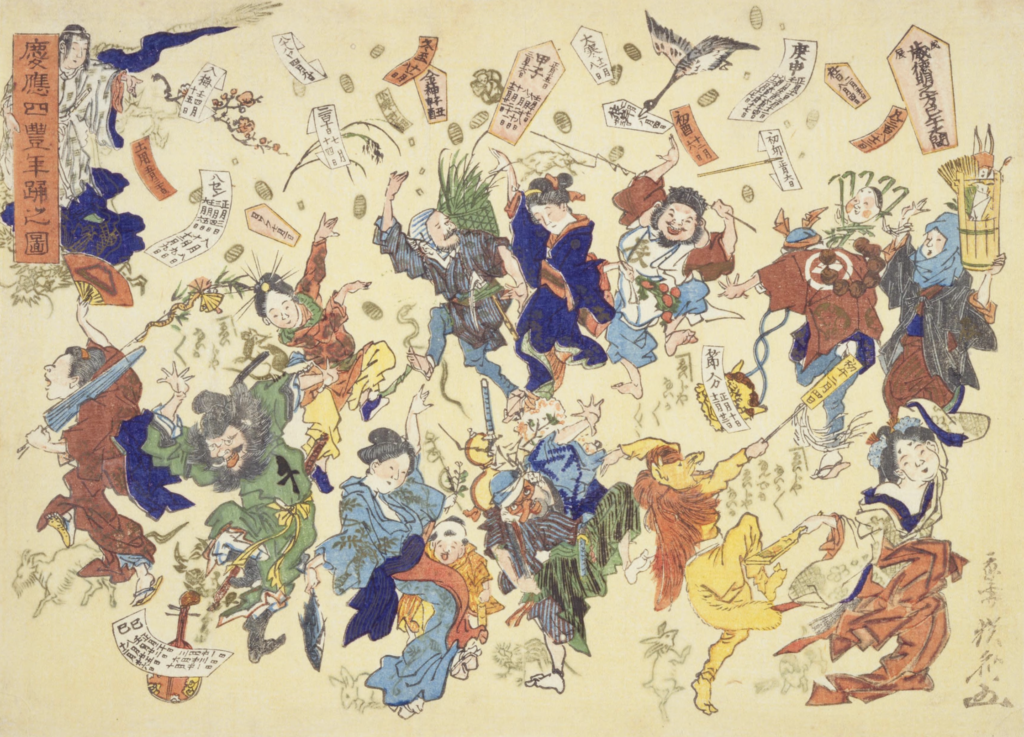
This image above incorporates a popular movement called Ee-Janai-Ka (isn’t it great?) which occurred in many parts of Japan among the citizens towards the end of the Edo period. It is a form of social and political protest in which large numbers of people dance and shout, Ee-Janai-Ka.
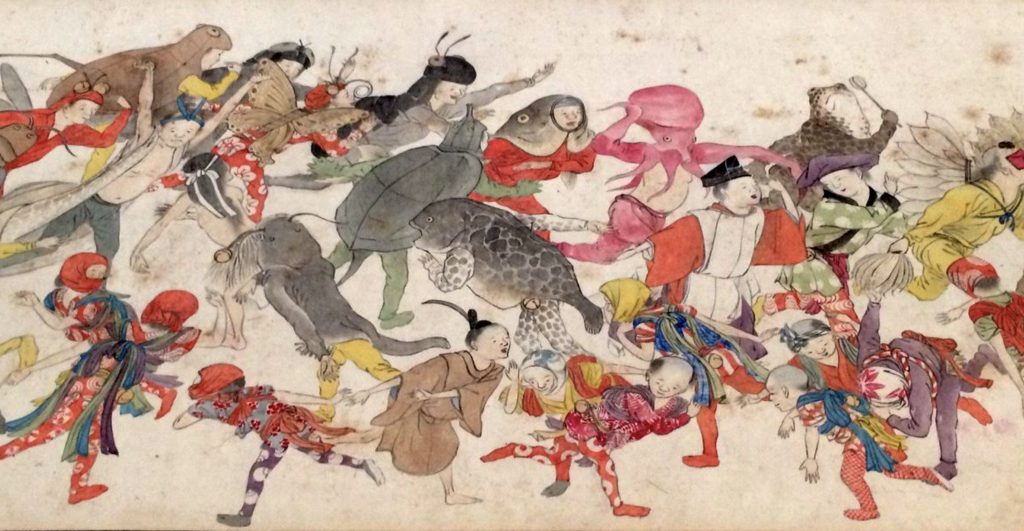
This drawing is a depiction of a costume dance festival in Kyoto. It portrays people dancing in high quality costumes as creatures such as an octopus, turtle, and catfish.
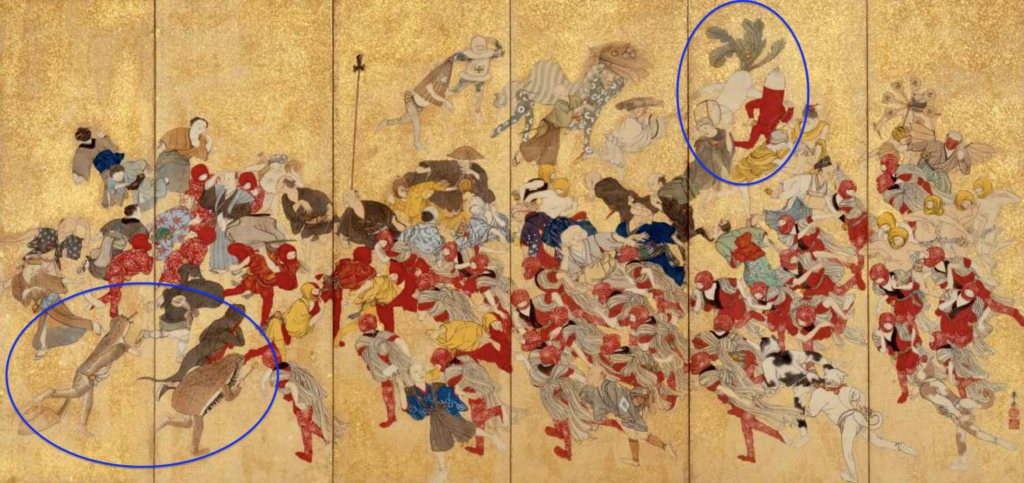
In the above picture, some people are dressed up as a radish and a frog. People are dancing in costumes, hoping for a good harvest.
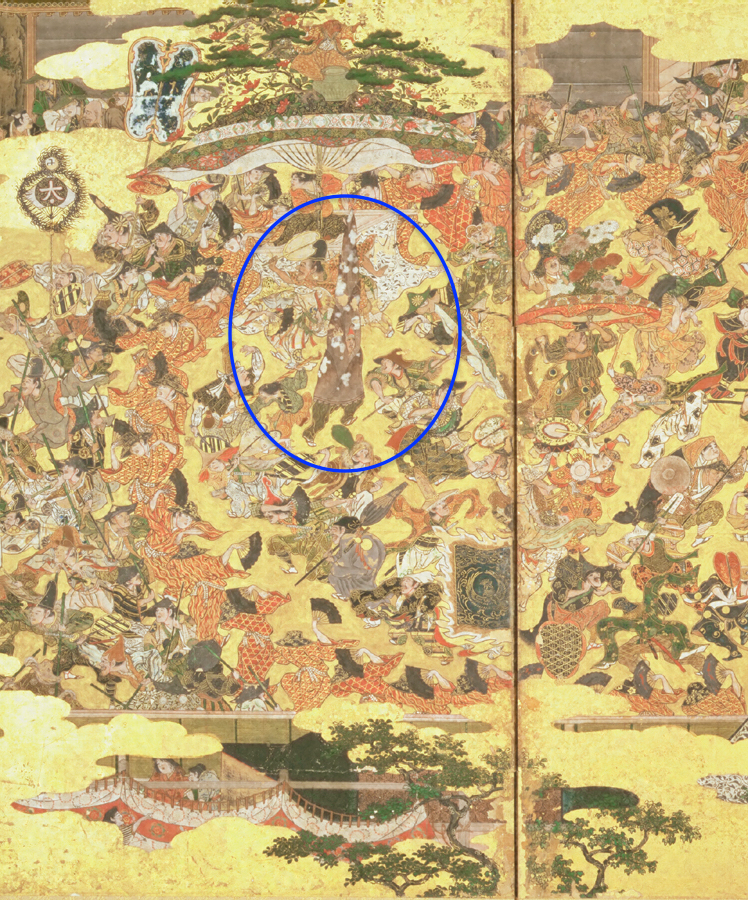
Above, a man is dressed in a bamboo shoot costume in a scene from the Toyokuni Festival. The celebration held in August 1604 to commemorate the seventh anniversary of the death of Toyotomi Hideyoshi.
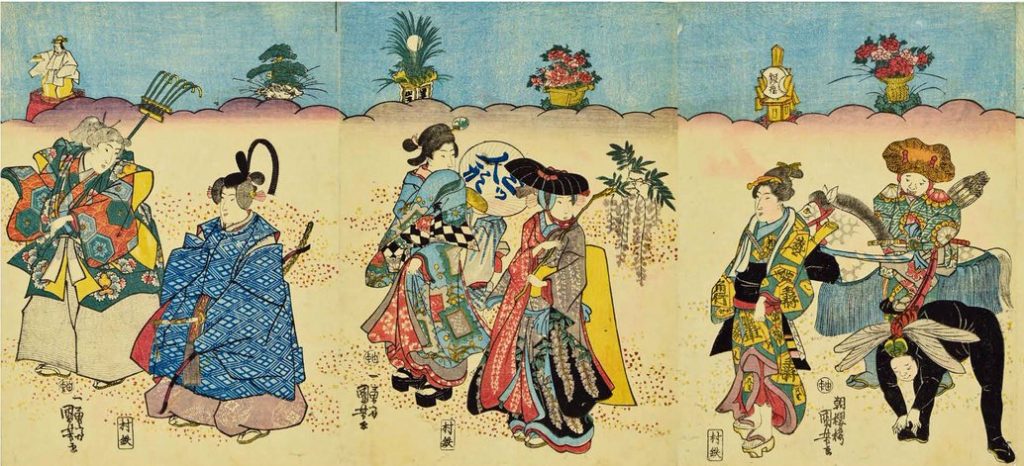
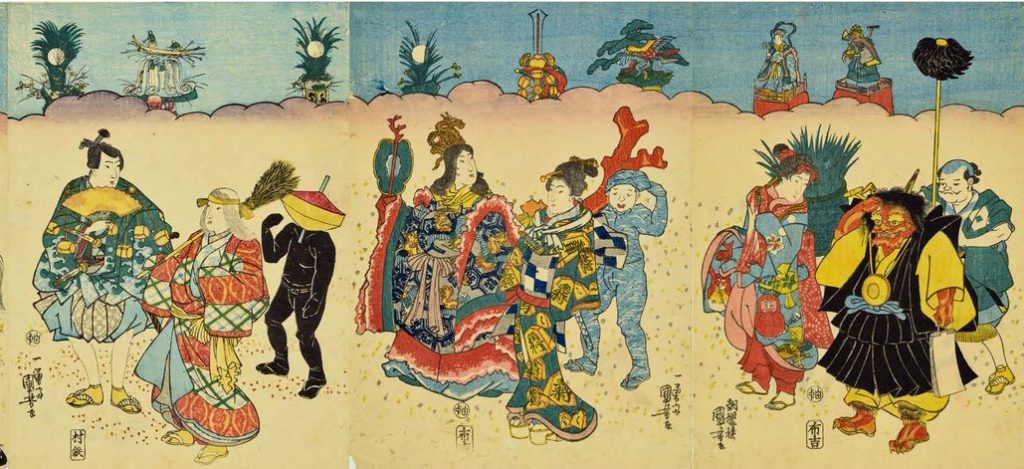
In what looks like a masquerade march above is the Kuniyoshi’s Ritual Parade. It describes the Sanno Festival at the end of the Edo period. People are disguised as dragonflies, coral, a spinning top and a demon. You can also see the citizens dressing up as samurai and nobles, and women dressing up as men.
When you think of Japanese-inspired costumes, what comes to mind? Is it Yasuke, the samurai depicted in the Netfilx series? Or is the samurais and ninjas in the Hollywood movie Snake Eyes: G.I. Joe Origins? There are people in foreign countries dressing up in costumes also inspired by traditional Japanese culture. At the same time, many Japanese enjoy cosplaying as American comic book stars or imitating aristocrats from medieval Europe, like Marie Antoinette and Napoleon Bonaparte. Discovering a foreign culture and transforming into something you very own is an overwhelming joy.

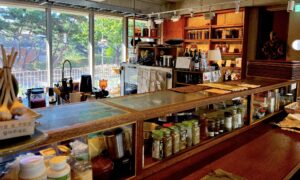

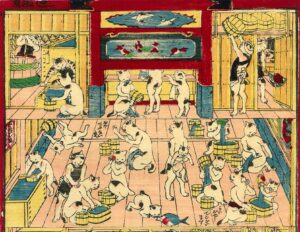
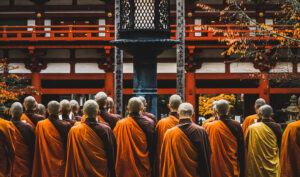

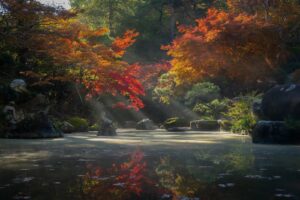
 Instagram
Instagram